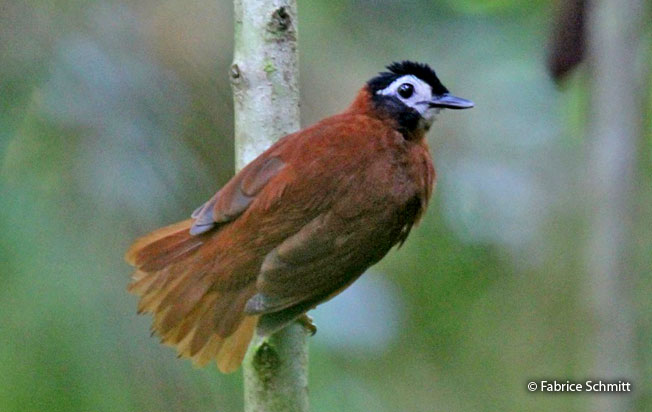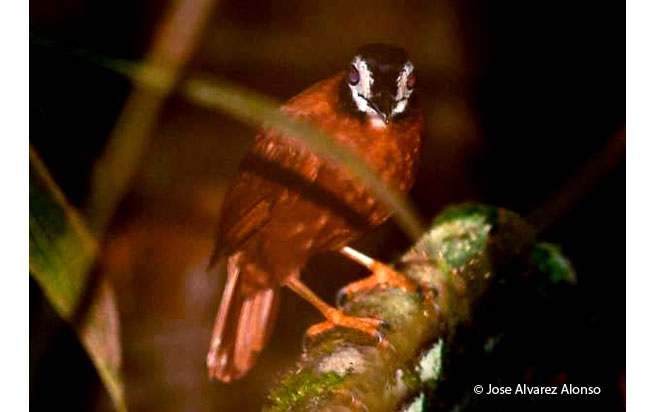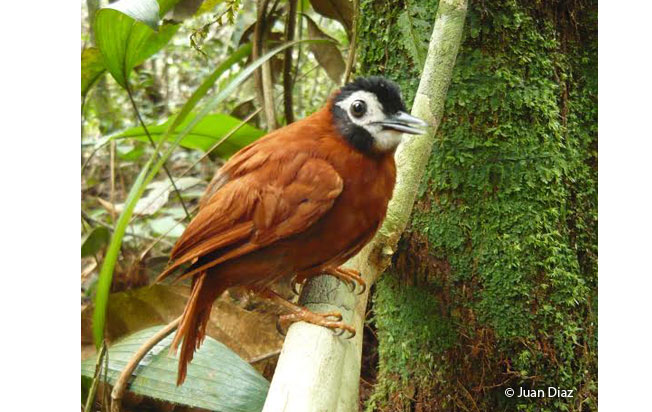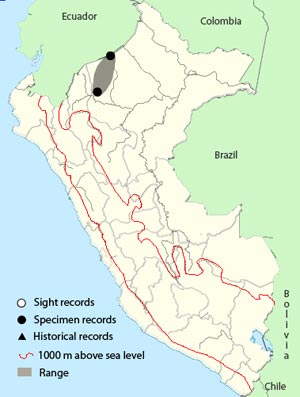Order: Passeriformes | Family: Thamnophilidae | IUCN Status: Least Concern

Age: Adult | Sex: Unknown | Loc. San Lorenzo, Loreto

Age: Adult | Sex: Unknown | Loc. Rio Morona, Loreto

Age: Adult | Sex: Unknown | Loc. Rio Morona, Loreto
Identification & Behavior: ~14 cm (5.5 in). The White-masked Antbird is uniformly chestnut. It has a white mask through the eye bordered by black. It forages in the understory of forest that grows in nutrient-poor soils such as Varillal forest type. It is superficially similar to the closely related White-plumed Antbird but has no plumes, a black head, and a conspicuous white mask.
Status: Endemic. The White-masked Antbird is uncommon and restricted to a small region in western Loreto.
Name in Spanish: Hormiguero de Mascara Blanca.
Sub-species: White-masked Antbird (Pithys castaneus), Berlioz, 1938.
Meaning of Name: Pithys: Gr. Puthios= Pythian, Delphian, an epithet of Apollo. castaneus: Gr. Kastanon= chestnut, castaneus= chestnut-coloured.
Distribution Map
Voice

Voice
References:
-
-
- Species range based on: Schulenberg, T. S., D. F. Stotz, and L. Rico. 2006. Distribution maps of the birds of Peru, version 1.0. Environment, Culture & Conservation (ECCo). The Field Museum. http://fm2.fieldmuseum.org/uw_test/birdsofperu on 03/01/2017.
-